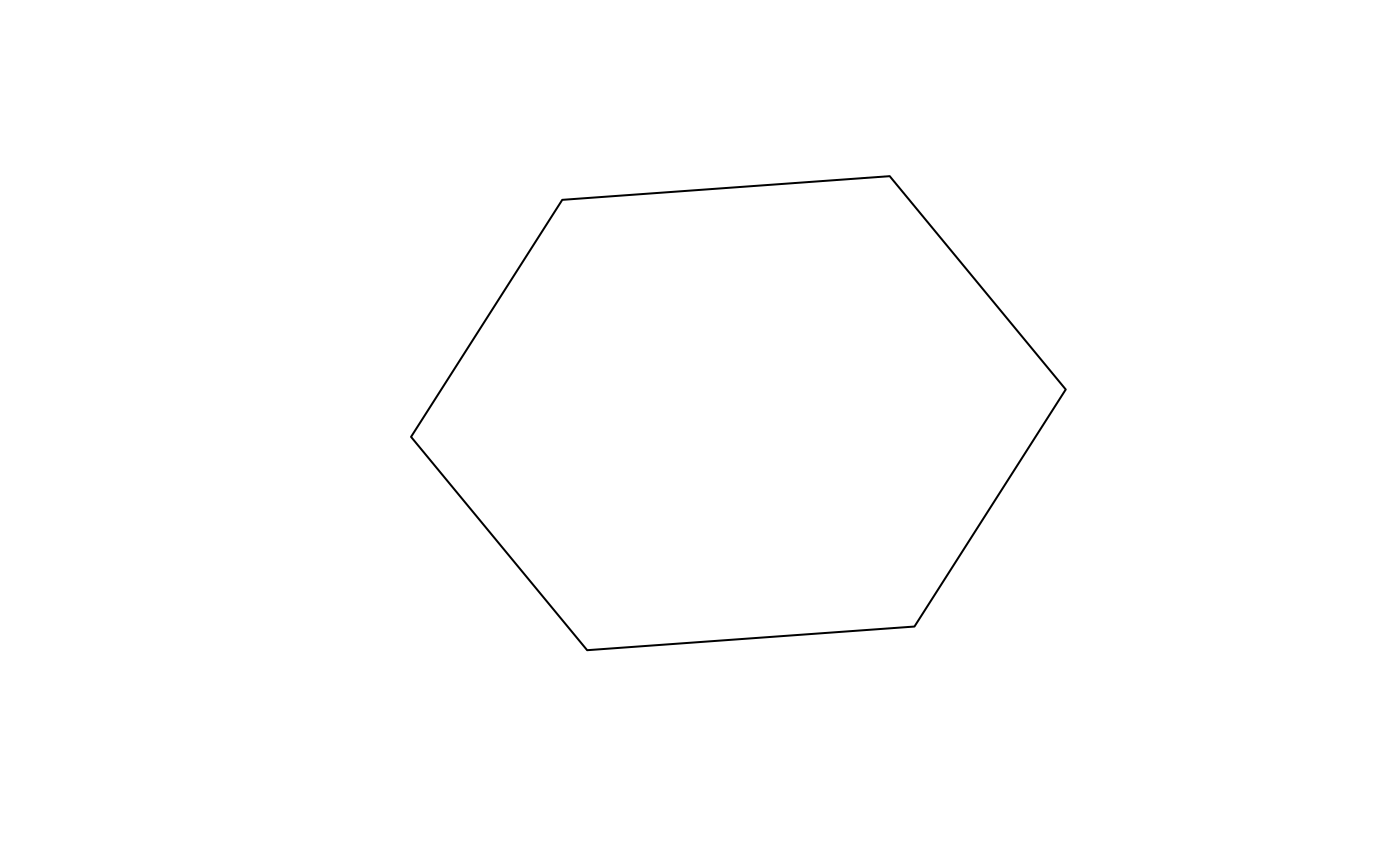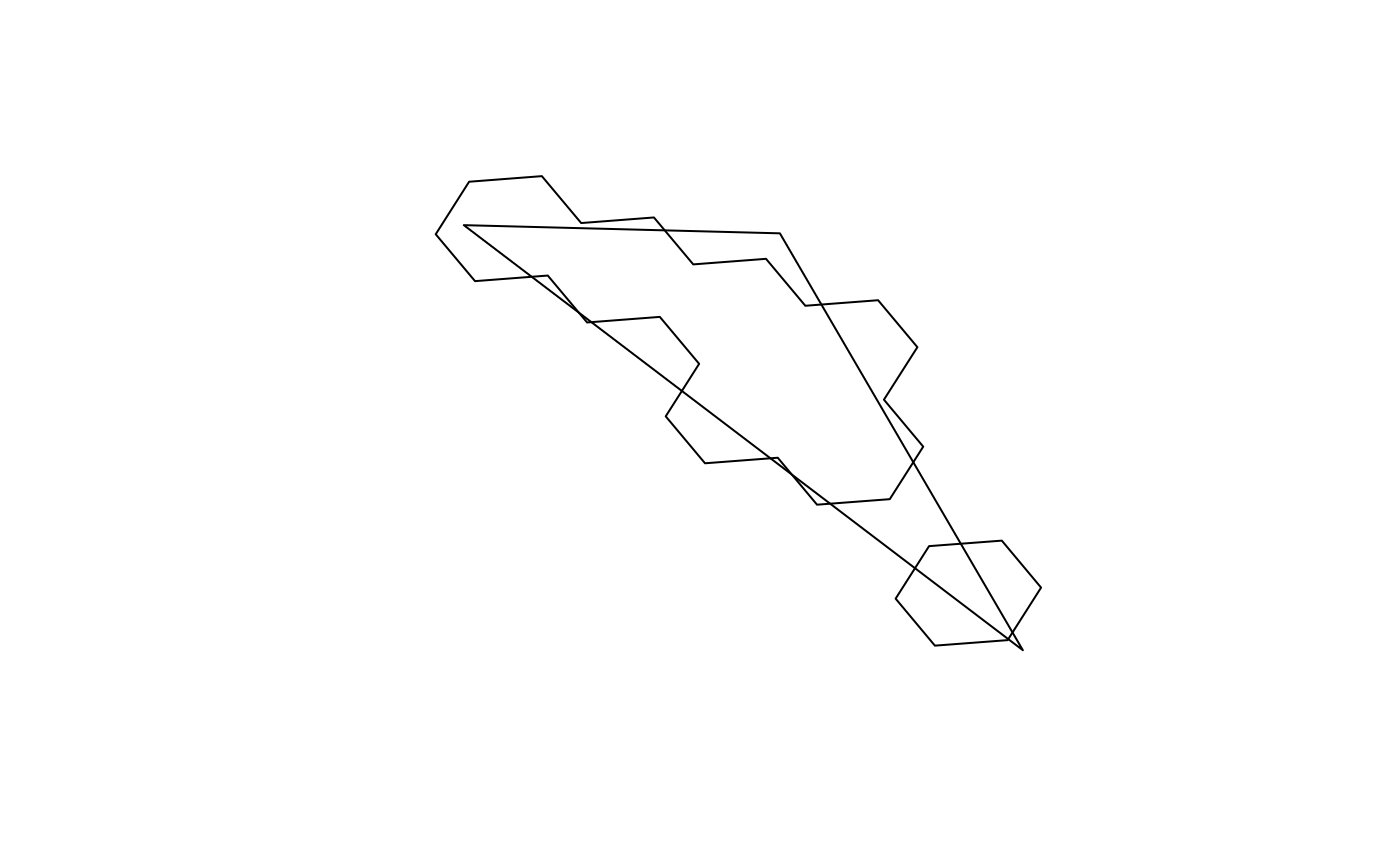R bindings to H3, a hexagon-based geographic grid system via h3-js.
R bindings via native H3 C library can be found at h3r. h3r is much faster but requires installing h3 separately.
WARNING Functions do not support vectorized operations currently. The return value of vectorized input is unspecified. You should map over vectorized input instead.
Installation
You can install the released version of h3js from CRAN with:
Development version can be installed with:
Core functions
library(h3js)
library(sf)
library(tidyverse)
# Convert a lat/lng point to a hexagon index at resolution 7
h3_index <- h3_geo_to_h3(37.3615593, -122.0553238, 7)
h3_index
#> [1] "87283472bffffff"
# Get the center of the hexagon
hex_center_coordinates <- h3_to_geo(h3_index)
hex_center_coordinates
#> [1] 37.35172 -122.05033
# Get the vertices of the hexagon
hex_boundary <- h3_to_geo_boundary(h3_index)
hex_boundary
#> [,1] [,2]
#> [1,] 37.34110 -122.0416
#> [2,] 37.35290 -122.0340
#> [3,] 37.36352 -122.0428
#> [4,] 37.36234 -122.0591
#> [5,] 37.35054 -122.0666
#> [6,] 37.33992 -122.0579
hex_boundary %>%
# close polygon
rbind(.[1,]) %>%
# swap columns
.[, c(2, 1)] %>%
# convert to simple feature collection
list() %>%
st_polygon() %>%
st_sfc() %>%
plot()
Useful algorithms
# Get all neighbors within 1 step of the hexagon
h3_k_ring(h3_index, 1)
#> [1] "87283472bffffff" "87283472affffff" "87283470cffffff" "87283470dffffff"
#> [5] "872834776ffffff" "872834729ffffff" "872834728ffffff"
# Get the set of hexagons within a polygon
polygon <- list(
c(37.813318999983238, -122.4089866999972145),
c(37.7198061999978478, -122.3544736999993603),
c(37.8151571999998453, -122.4798767000009008)
)
hexagons <- h3_polyfill(polygon, 7)
hexagons
#> [1] "872830828ffffff" "87283082effffff" "87283082affffff" "87283082bffffff"
#> [5] "872830876ffffff" "872830820ffffff" "872830870ffffff"
# Get the outline of a set of hexagons, as a GeoJSON-style MultiPolygon
coordinates <- h3_set_to_multi_polygon(hexagons, TRUE)
c(
coordinates %>%
map(~ matrix(.x, ncol = 2)) %>%
map(list) %>%
st_multipolygon() %>%
st_sfc(),
do.call(rbind, polygon) %>%
# close polygon
rbind(.[1,]) %>%
# swap columns
.[, c(2, 1)] %>%
list %>%
st_polygon() %>%
st_sfc()
) %>%
st_sf() %>%
plot()
Benchmark
Houston <- list(lat = 29.7632836, lon = -95.3632715)
microbenchmark::microbenchmark(
h3r::getIndexFromCoords(Houston$lat, Houston$lon, resolution = 5),
h3_geo_to_h3(Houston$lat, Houston$lon, res = 5),
h3r::getBoundingHexFromCoords(Houston$lat, Houston$lon, resolution = 5),
h3_to_geo_boundary(h3_geo_to_h3(Houston$lat, Houston$lon, res = 5))
)
#> Unit: microseconds
#> expr
#> h3r::getIndexFromCoords(Houston$lat, Houston$lon, resolution = 5)
#> h3_geo_to_h3(Houston$lat, Houston$lon, res = 5)
#> h3r::getBoundingHexFromCoords(Houston$lat, Houston$lon, resolution = 5)
#> h3_to_geo_boundary(h3_geo_to_h3(Houston$lat, Houston$lon, res = 5))
#> min lq mean median uq max neval
#> 12.074 29.1875 142.95902 42.3495 60.9185 9666.731 100
#> 729.252 1065.5555 1725.82045 1501.5660 2151.0500 5801.808 100
#> 17.404 34.8925 56.74685 50.5785 59.7705 406.992 100
#> 1361.911 2132.8900 3377.73784 2801.3605 3811.4555 17681.988 100